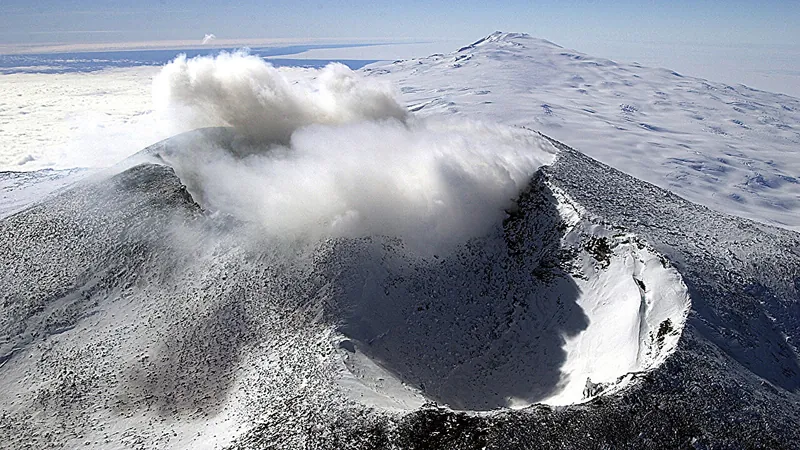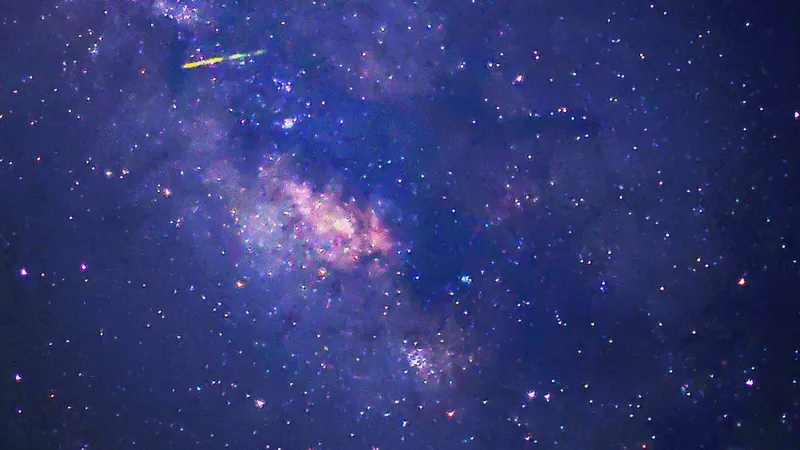
Antarctic Ice Melt Could Trigger Eruptions of Hidden Volcanoes: What You Need to Know!
2025-01-06
Author: Ming
Introduction
Beneath the icy expanse of Antarctica, a dramatic geological process could be set in motion due to climate change. Underneath its thick ice sheets—home to both the prominent Mount Erebus, famous for its active lava lake, and over 100 lesser-known volcanoes—we may be on the brink of surprising volcanic activity. Many of these dormant giants are situated along the continent's western coast, with some lying several kilometers beneath the ice.
The Impact of Melting Ice on Volcanic Activity
As global temperatures rise, the Antarctic ice sheet is melting at an alarming rate, contributing to rising sea levels. But this isn’t just about water levels; the melting ice is lifting the immense weight that has pressed down on the volcanic rock beneath. This phenomenon could lead to increased eruptions from subglacial volcanoes, which have shown similar trends in other parts of the world as ice melts.
Recent Research Findings
A recent study led by A. N. Coonin and colleagues has brought this issue to light. Through 4,000 extensive computer simulations, the researchers explored the relationship between ice sheet loss and volcanic activity in Antarctica. They discovered that gradual melting could indeed lead to more significant eruptions beneath the ice. Their findings, published in the prominent journal Geochemistry, Geophysics, Geosystems, suggest a shift in the volcanic landscape of Antarctica due to climate impacts.
Mechanisms Behind Volcanic Eruptions
The underlying mechanism is straightforward: as the heavy ice sheets melt, the pressure on subterranean magma chambers is significantly reduced. This change allows for the expansion of already-compressed magma, which can increase the likelihood of eruptions. Moreover, magma cavities are often packed with volatile gases that, under less pressure, escape rapidly—similar to the fizz of a freshly opened soda. This release can create a volatile environment, heightening eruption potential.
Consequences of Eruptions
Though these eruptions typically go unnoticed at the surface, they don’t come without consequences. The heat generated from such volcanic activity can foster additional ice melting beneath the surface, undermining the stability of the ice sheet above. This creates a concerning feedback loop: as surface pressure continues to decrease from melting, further volcanic activity could ensue.
Gradual Nature of the Process
It’s important to note, however, that this process is gradual, unfolding over hundreds of years. Consequently, even if humanity manages to curb emissions and mitigate climate change, the repercussions of ice sheet melt can persist.
Historical Context
Intriguingly, scientists believe that a similar mechanism may have played a role during the last ice age when Antarctica’s ice sheets were thicker. Understanding these interactions is crucial, not just for predicting future eruptions, but also for assessing how they might influence our planet's climate and coastlines.
Conclusion
As this critical research unfolds, it raises an alarm about the interconnectedness of earth systems and emphasizes the need for urgent action to combat climate change—because the melting ice might just be the tip of the iceberg when it comes to geological surprises lurking beneath the surface!


 Brasil (PT)
Brasil (PT)
 Canada (EN)
Canada (EN)
 Chile (ES)
Chile (ES)
 Česko (CS)
Česko (CS)
 대한민국 (KO)
대한민국 (KO)
 España (ES)
España (ES)
 France (FR)
France (FR)
 Hong Kong (EN)
Hong Kong (EN)
 Italia (IT)
Italia (IT)
 日本 (JA)
日本 (JA)
 Magyarország (HU)
Magyarország (HU)
 Norge (NO)
Norge (NO)
 Polska (PL)
Polska (PL)
 Schweiz (DE)
Schweiz (DE)
 Singapore (EN)
Singapore (EN)
 Sverige (SV)
Sverige (SV)
 Suomi (FI)
Suomi (FI)
 Türkiye (TR)
Türkiye (TR)
 الإمارات العربية المتحدة (AR)
الإمارات العربية المتحدة (AR)